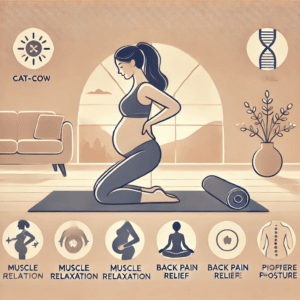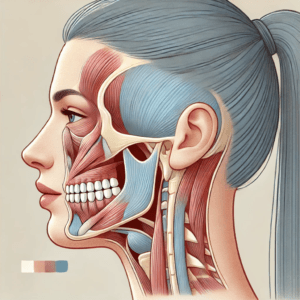Early Signs of Stroke in Women You Shouldn’t Ignore
Table of Contents

Early Signs of Stroke in Women You Shouldn’t Ignore 👩⚕️
Why Are Strokes in Women So Often Missed?
Here’s something scary…
Women are more likely to die from a stroke than men.
Not because they have worse outcomes.
But because the signs are often misread, ignored—or completely missed.
Why? Because stroke symptoms in women can look… different.
Ever felt suddenly dizzy, nauseated, or exhausted for no clear reason?
It could be your body waving a giant red flag 🚩.
Let’s clear up the confusion.
This article covers:
- The unique early signs of stroke in women
- How hormones, birth control, and pregnancy affect stroke risk
- What to do (and when to act FAST)
- And how to protect yourself—at any age
🧠 What’s Different About Stroke Symptoms in Women?
Most people know the basic stroke signs:
- Face drooping
- Arm weakness
- Slurred speech
But women often experience non-traditional symptoms that don’t scream “stroke” — and that’s dangerous.
Here’s what to watch for:
✅ Classic Stroke Symptoms (in everyone)
- Sudden numbness/weakness on one side
- Speech difficulty or slurred speech
- Vision problems in one or both eyes
- Balance issues, dizziness, or trouble walking
- Severe headache with no known cause
⚠️ Unique Early Signs in Women:
- Sudden fatigue or weakness
- Shortness of breath
- Nausea or vomiting
- Hiccups or chest pain
- Sudden confusion or memory problems
- Seizure-like activity
- Loss of consciousness
- Irritability or behavioral changes
📌 These symptoms are especially dangerous because they’re easy to blame on stress, anxiety, or hormones.
🌸 How Hormones Impact Stroke Risk in Women
Let’s talk estrogen.
While it has protective benefits early in life, it can also increase clotting risk—especially when artificially altered.
🚺 Key hormonal stroke risk factors:
- Birth control pills (especially with smoking or high blood pressure)
- Hormone replacement therapy (HRT) during menopause
- Pregnancy, particularly the third trimester and postpartum
- Preeclampsia (pregnancy-induced high blood pressure)
- Menopause (blood pressure often rises afterward)
Women in their 20s, 30s, and even teens can have strokes—especially during hormonal surges or imbalances.
So if something feels off during a hormonal life stage, listen to your body.
🤰 Stroke During Pregnancy: What to Know
Stroke during pregnancy is rare—but when it happens, it’s life-threatening.
When is risk highest?
- Third trimester
- Immediately after delivery (postpartum period)
- If you have preeclampsia or gestational hypertension
Symptoms to watch during pregnancy:
- Blurred vision or severe headache
- Sudden swelling or shortness of breath
- Confusion or disorientation
- Numbness or weakness on one side
Don’t wait. Don’t guess. Get medical help immediately.
⏱️ FAST: The Universal Rule Still Applies
Whether male or female, every second counts when it comes to stroke.
Here’s the FAST method:
- F – Face drooping
- A – Arm weakness
- S – Speech difficulty
- T – Time to call 911
But remember: Women often have extra symptoms—and those are often dismissed as emotional or hormonal.
Don’t be polite. Don’t try to “tough it out.” Call for help.
👩💼 Real Talk: Why Women Ignore the Signs
Let’s be honest—women are often caregivers, not self-carers.
You’re busy, multitasking, managing work, kids, or aging parents. You don’t want to “make a big deal” out of feeling off.
But here’s the truth: Ignoring the signs doesn’t make you strong. It makes you vulnerable.
If something feels wrong, it probably is.
🧭 Know Your Risk: Women’s Stroke Triggers
Here are some red flags that increase your stroke risk:
- Smoking while on birth control
- High blood pressure
- Migraines with aura
- Irregular heartbeat (atrial fibrillation)
- Family history of stroke or heart disease
- Autoimmune diseases (like lupus)
The more you know, the more power you have to protect yourself.
📥 Download: Stroke Symptom Chart for Women
Want a simple way to remember the signs?
🎯 Download our FREE Stroke Symptom Chart for Women
Print it, post it on the fridge, share it with friends.
👉 Know Your Body – Get the Stroke Symptom Chart for Women
🔁 Related Reading
- 👉 What Are the First Warning Signs of a Stroke in Adults?
- 👉 How to Know If You’re Having a Mini-Stroke
- 👉 Stroke Prevention Tips for Seniors
🧠 Conclusion: You Know Your Body—Trust It
You don’t have to be a doctor to recognize a stroke.
You just need to know the signs—especially the ones unique to women.
To recap:
- Women may feel nausea, confusion, or exhaustion—not just weakness or slurred speech
- Hormonal changes and pregnancy increase risk
- Acting FAST is non-negotiable
- Trust your gut: If something feels wrong, it probably is
👩⚕️ You deserve to be here—healthy, strong, and informed.
❓ FAQ
Are stroke symptoms in women different from men?
Yes—while the core symptoms are the same, women often experience nausea, shortness of breath, and fatigue more often.
Can birth control cause a stroke?
It increases risk, especially if combined with smoking or high blood pressure.
What are the stroke risks during pregnancy?
The third trimester and postpartum are highest risk periods, especially with preeclampsia or clotting disorders.
Is it true young women can have strokes too?
Yes. Women in their 20s and 30s can have strokes—especially those with migraines, autoimmune conditions, or hormonal imbalances.
How can I remember the signs of stroke?
Use the FAST method and download the symptom chart for women as a daily reminder.













Post Comment